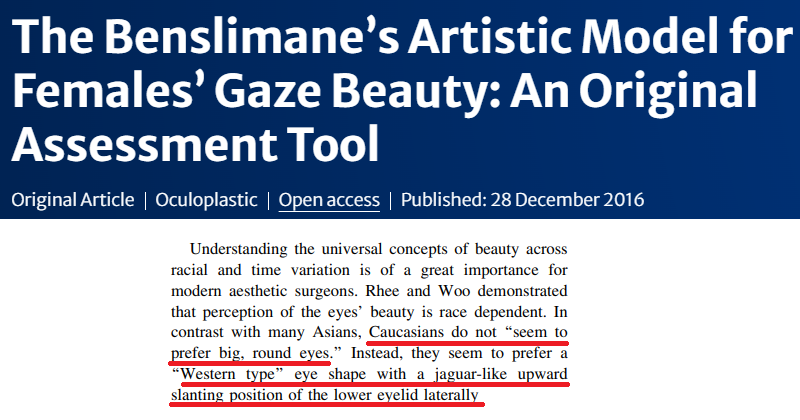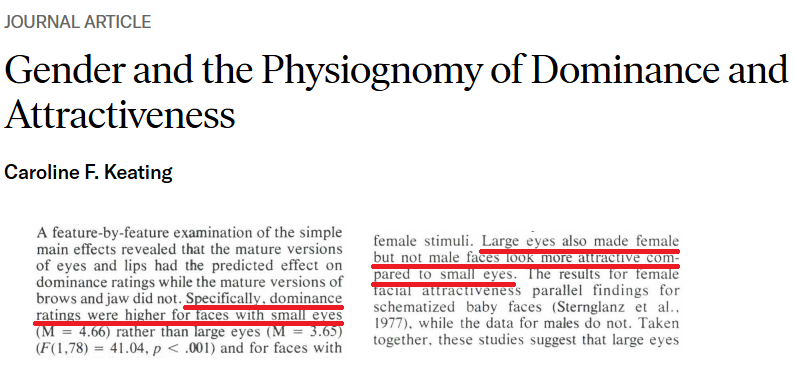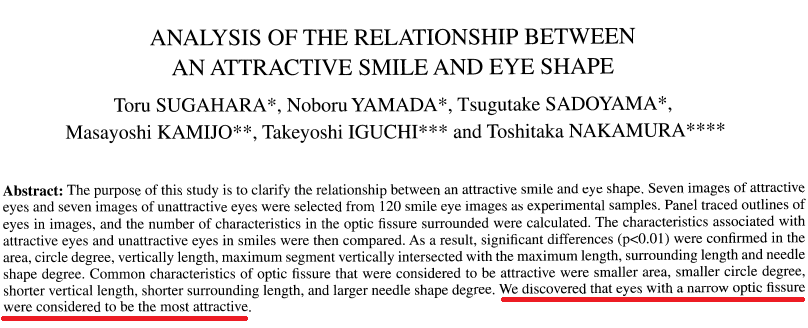Summary
Narrow eye shapes in males are often linked to perceptions of attractiveness. A study focusing on cultural differences revealed that Caucasians tend to prefer a “Western-type” eye shape, characterized by a narrower appearance, which contrasts with the preference for larger, rounder eyes in some Asian cultures. In addition, research suggests that narrow eyes are perceived as more dominant, a trait closely tied to masculinity. The study found that this eye shape does not diminish attractiveness but may enhance it, as dominance is often seen as appealing in males. Another study examining the relationship between eye shape and attractiveness during smiles analyzed images of both attractive and unattractive eyes. The findings indicated that eyes with a narrow optic fissure, contributing to the “narrow eyes” appearance, were consistently rated as the most attractive, highlighting the aesthetic appeal of this eye shape.
Research
Narrow eye shapes in males have been associated with perceptions of attractiveness, particularly in the context of facial aesthetics. For example, a study demonstrated that Caucasians tend to prefer a “Western-type” eye shape, which contrasts with the preference for larger, rounder eyes often found in some Asian cultures.

Another study suggested that narrow eyes are associated with higher dominance ratings, meaning they make a person appear more dominant. Moreover, the study suggested that narrow eyes do not negatively affect their attractiveness. Instead, the association with dominance may enhance their appeal, as dominance is often seen as a desirable masculine trait.

Another study whose purpose was to clarify the relationship between an attractive smile and eye shape. For this, seven images of attractive eyes and seven images of unattractive eyes were selected from 120 smile eye images as experimental samples. The study discovered that eyes with a narrow optic fissure, which can contribute to the appearance of “narrow eyes” shape, were considered to be the most attractive.

Reference
Benslimane, F., van Harpen, L., Myers, S. R., Ingallina, F., & Ghanem, A. M. (2017). The Benslimane’s artistic model for females’ gaze beauty: an original assessment tool. Aesthetic Plastic Surgery, 41, 81-89. https://doi.org/10.1007/s00266-016-0721-y
Keating, C. F. (1985). Gender and the physiognomy of dominance and attractiveness. Social psychology quarterly, 61-70. https://doi.org/10.2307/3033782
SUGAHARA, T., YAMADA, N., SADOYAMA, T., KAMIJO, M., IGUCHI, T., & NAKAMURA, T. (2008). Analysis of the relationship between an attractive smile and eye shape. Kansei engineering international, 7(2), 155-161. https://doi.org/10.5057/kei.7.155